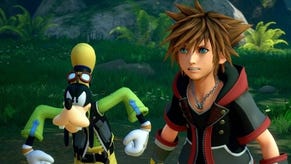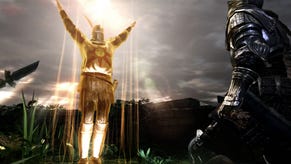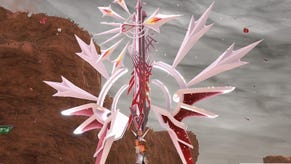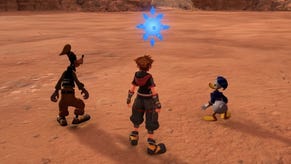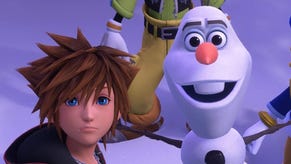Kingdom Hearts 3 review - a grand finale that's both torturous and sublime
Tangled.
By my reckoning, there are 238 cutscenes in Kingdom Hearts 3. If that sounds like a lot for a game of around 30-40 hours, that's because it is. But then Kingdom Hearts 3 is, in the modern vernacular, a lot: from the dazzling pyrotechnics that accompany many of its special moves to its extravagant, indulgent final act, restraint is not in its vocabulary. To a point, its aggressive investment in its story is understandable. After all, it has two mainline entries and roughly half a dozen spin-offs' worth of narrative threads to pull together and tie up. But heavens, it shows. This is a game that should really have a spring in its step - this is Disney, for goodness' sake - but it's constantly burdened by its own knotty history.
For all its intricacies, the underlying story is a fairly simple one. Our big-shoed hero, Sora, needs "the power of waking" to sort out regular villains Organization 13 - who with their ostentatious zips and hooded black leather trenchcoats look ever more like Dementors in a fetish club. The tone is set in the very first scene, which adopts the time-honoured tradition of representing the battle between good and evil as a game of chess between a man dressed in black and another in white. As one takes his turn, he asks the other the immortal question, "Have you heard of the ancient Keyblade War?"
It's an opening line that will cause as many to roll their eyes as to rub their hands. It soon becomes apparent that this is a game for anyone who's embedded themselves in Kingdom Hearts' tangled lore for the better part of two decades, or else those who've been playing catch-up in the long lead-up to the launch of this chapter-closer. That several specialist sites and YouTubers have felt the need to produce their own 'story so far' says a lot. That a five-chapter recap - briskly told, for a change - is essentially required reading says even more. Besides, those summaries only go so far. I've played and finished both previous numbered entries, as well as PSP spin-off Birth By Sleep and Dream Drop Distance on 3DS, and still I was left flummoxed at times. On more than one occasion I paused a cutscene to look up a wiki because someone had referred to a name or a plot development I couldn't recall.
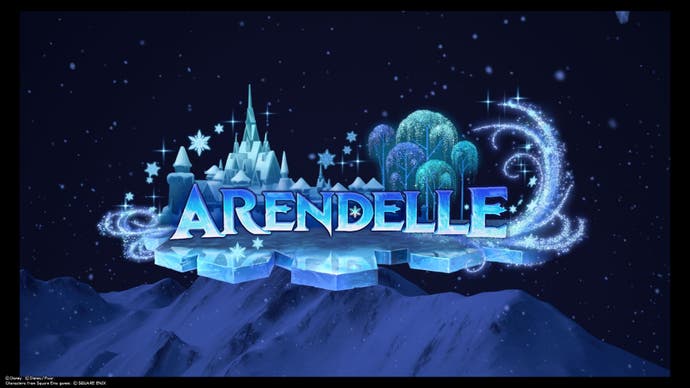
And, on more than one occasion, those things were subsequently explained - because Kingdom Hearts 3 can't decide how it should bring players up to speed. Those who know what's what will be bored by the endless exposition, and those who don't won't have the faintest clue what's going on in some scenes. It says much that half the time the cast seem equally baffled. "I'm confused," says Toy Story's Woody after one plot point is explained for a second time. Later, in a moment of sheer exasperation, Monsters Inc's Mike Wazowski says what most of us are thinking: "I have no idea who or what you're talking about!"
In context, these lines don't register as self-referential humour so much as a flat acknowledgement that it's all become - well, let's be kind and just say a little unwieldy. Yes, there's an awful lot to get through and wrap up. But it's hard to sympathise too much with writer/director Tetsuya Nomura when it's a mess of his own making. When you've got Donald Duck talking about "datascapes", something has gone badly wrong. Or, to paraphrase Harrison Ford: Tetsuya, you can type this shit, but you sure can't say it.
It's a pity, as when Kingdom Hearts 3 deigns to let you play - and I'm not talking about the moments where a cutscene finishes and you walk forward for ten seconds only for another to start up - there's a liberal sprinkling of Disney magic. With a full magic gauge you can summon the likes of Simba, roaring to produce a circle of flame as you ride him into battle. Then, as you chain attacks, you can call upon the brilliant Attractions, each based on a fairground ride and decorated in thousands of tiny lights. A carousel spins faster and faster with rhythmic button presses; teacups careen madly around as you try to steer them towards clusters of enemies, laughing like a child. They're not always particularly efficient, though if used well they can be devastating. But gosh, they're fun.
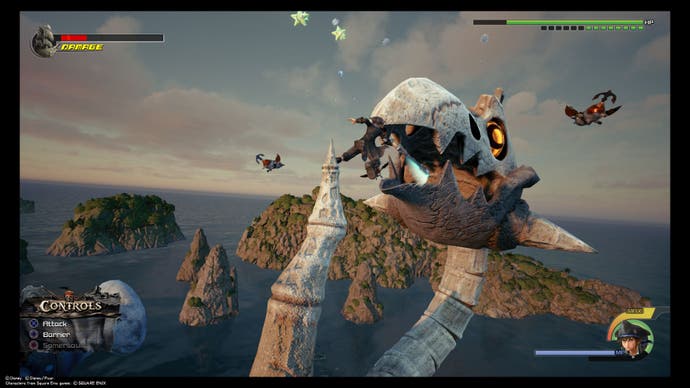
Your own involvement in all this may sometimes feel limited, and on Standard difficulty combat is mostly a breeze. But that's besides the point. It's all about looking great and fighting with style; not just finishing off enemies, but doing so without taking a hit. That's easier said than done at times with a wayward camera and a lock-on that doesn't always do its job. Dream Drop Distance's Flowmotion feature, which lets you swing around poles and trees and chain moves together, doesn't work nearly as well here as in the compact environments on 3DS. Nevertheless, throughout it all, Sora feels thrillingly agile. By the end, he's running up walls, diving off to launch into mid-air combos, his keyblade shifting into a giant hammer or a pair of honey-shooting guns, before joining Donald to release a cascade of fireworks to finish off a group of Heartless. When it flows, it's spectacular stuff.
There's plenty to keep you busy between combat and cutscene, too. A spot of rhythm-action dancing with Rapunzel and the townsfolk of Corona is an all-too-fleeting delight. In Big Hero 6's San Fransokyo, you dash between cover positions under heavy fire, launching into slo-mo slides while shooting at targets and you begin to wonder if Nomura's a secret Vanquish fan. And if he seems to have grossly overestimated affections for At World's End, the Pirates of the Caribbean stage amusingly turns into a PG-rated Assassin's Creed: Black Flag, as you explore an archipelago in a comically responsive ship, blasting Heartless-controlled galleons with your cannons and leaping impossibly into the air to wash them away with a giant tidal wave. They don't all work. The gummi ship sections are still rubbish, but that's no great shock. And a cooking minigame has potential, but takes longer to set up than to play: whether you're cracking an egg or pouring wine into a pan, it's over within seconds.
That's typical of a game where you seem to spend more time watching than doing. Which would be less of a problem if the story worked. Nowhere are the script's failings more obvious than the third kingdom you visit: Corona, from the fantastic Tangled. Suddenly, the dialogue has more zip, the gags are finally landing - and that's because they're lifted wholesale from the film. In fact, sluggish editing takes the shine off one of its great early comic moments, which plays here like an early theatre rehearsal before everyone's properly learned their lines. The same goes for Frozen. Shortly after we meet Elsa, we get the whole of Let It Go, and if you weren't convinced before just how good that song is, here it sparkles like a diamond in the rough: a heart-melting moment of soaring brilliance.
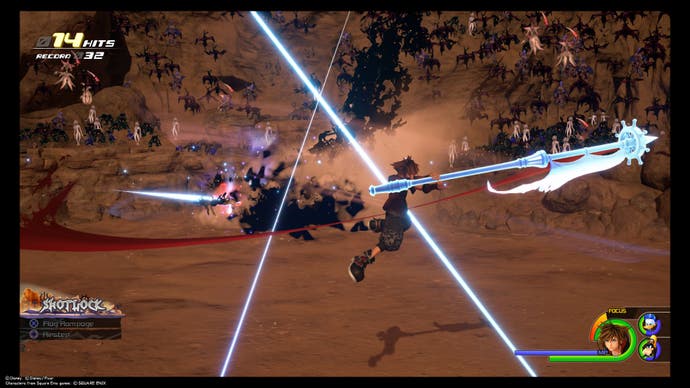
By the final act, though, Nomura has abandoned all pretence of integrating these worlds within his story. Donald, Goofy and to a lesser extent Mickey still have key roles to play, but a plot swerve essentially renders Sora's whistle-stop tour of the Disneyverse entirely moot. Sure, he's got a few nifty keyblades for his troubles, but essentially he's no further than he was before he started. What follows is equal parts maddening and exhilarating: a cavalcade of boss fights against characters with multiple health bars, long goodbyes, tearful reunions and revelations. It's a grand finale that feels both grand and, yes, final. If you're a Kingdom Hearts obsessive, it's hard to imagine you won't be satisfied with how fully it wraps things up, and those invested in the characters may find themselves dabbing away a tear or five.
For everyone else? Well, here's the thing. Kingdom Hearts should be right up my street: I love Disney, I have a reasonable tolerance for the idiosyncrasies of your typical JRPG, and I enjoyed the second game and Birth By Sleep. I fell hard for the weaponised nostalgia of The Force Awakens and Mary Poppins Returns. So this should really be an open goal. And yet, Yoko Shimomura's impeccable score notwithstanding (those yearning oboes of the Twilight Town theme always set me off), I remained dry-eyed throughout.

My connection with Sora is no deeper than that mild Stockholm syndrome we sometimes experience with videogame characters. We're invested in Sora entirely because we've spent so much time with him - as him - rather than because Nomura has made us care. And his unstinting cheerfulness in the face of almost certain doom becomes slightly wearing - although given there's always some kind of deus ex machina to help him out of a bind, that might explain why. Still, credit to Haley Joel Osment for making the absolute best of the platitudes he's made to spout. (Though lines like "May your heart be your guiding key" sound like the kind of inspirational quote your gran posts on Facebook.)
What's perhaps most frustrating about Kingdom Hearts 3 is that it proves it's capable of cutting through the crap. There's a piece of pure visual storytelling late on that is comfortably one of the game's most moving moments - a gesture of friendship in dire circumstances that says so much more than several hours' worth of characters explaining the plot to one another could ever do.
With more of that sort of thing, this could have been the crossover classic it always threatened to be. Or even just a breezy bit of lightweight entertainment - you know, of the kind a certain well-known animation house tends to do so well. As Emily Blunt sings in The Poppins Awakens, "Some stuff and nonsense could be fun." There's plenty of both in Kingdom Hearts 3, but not enough of the kind I'm looking for.



